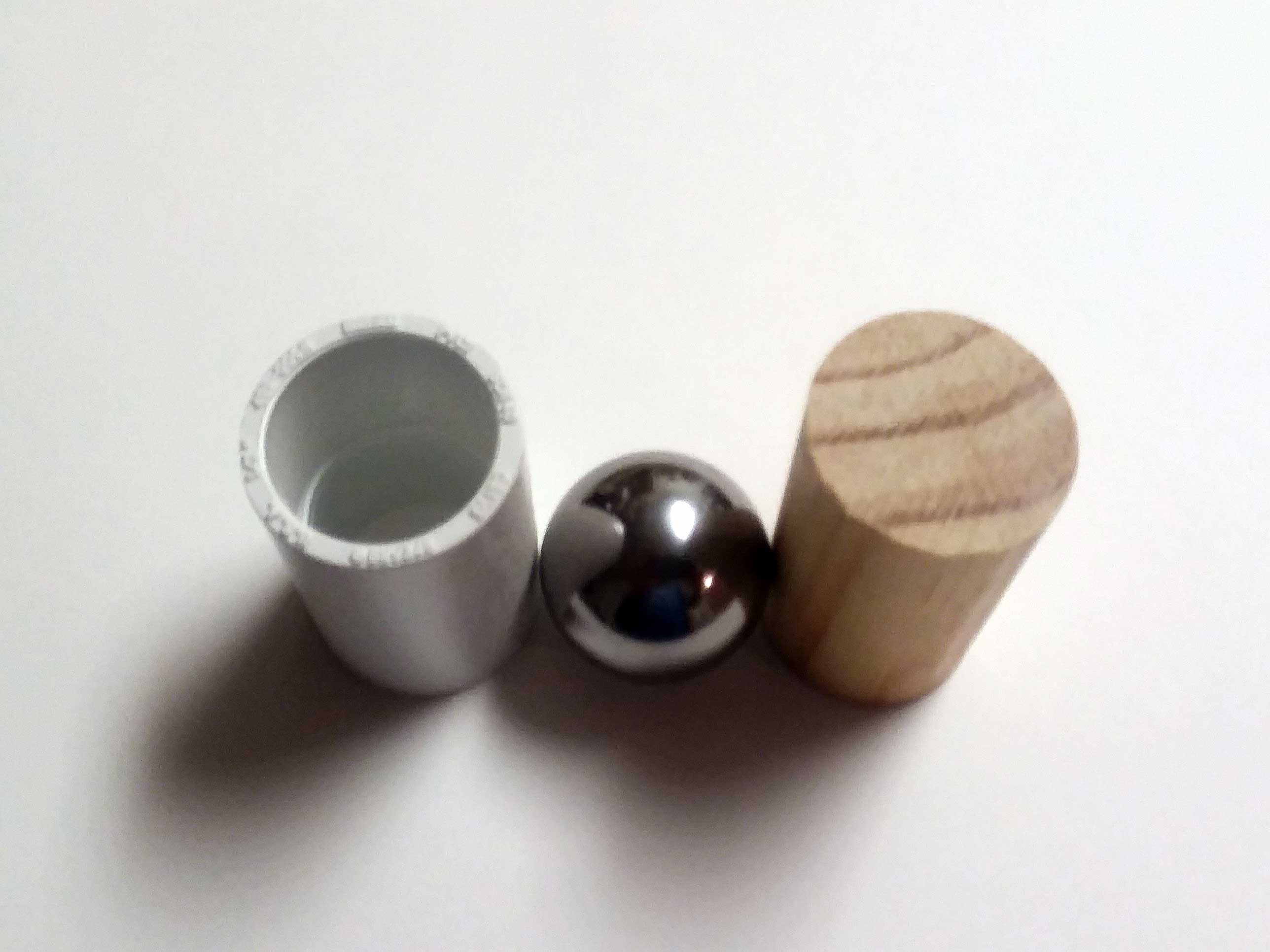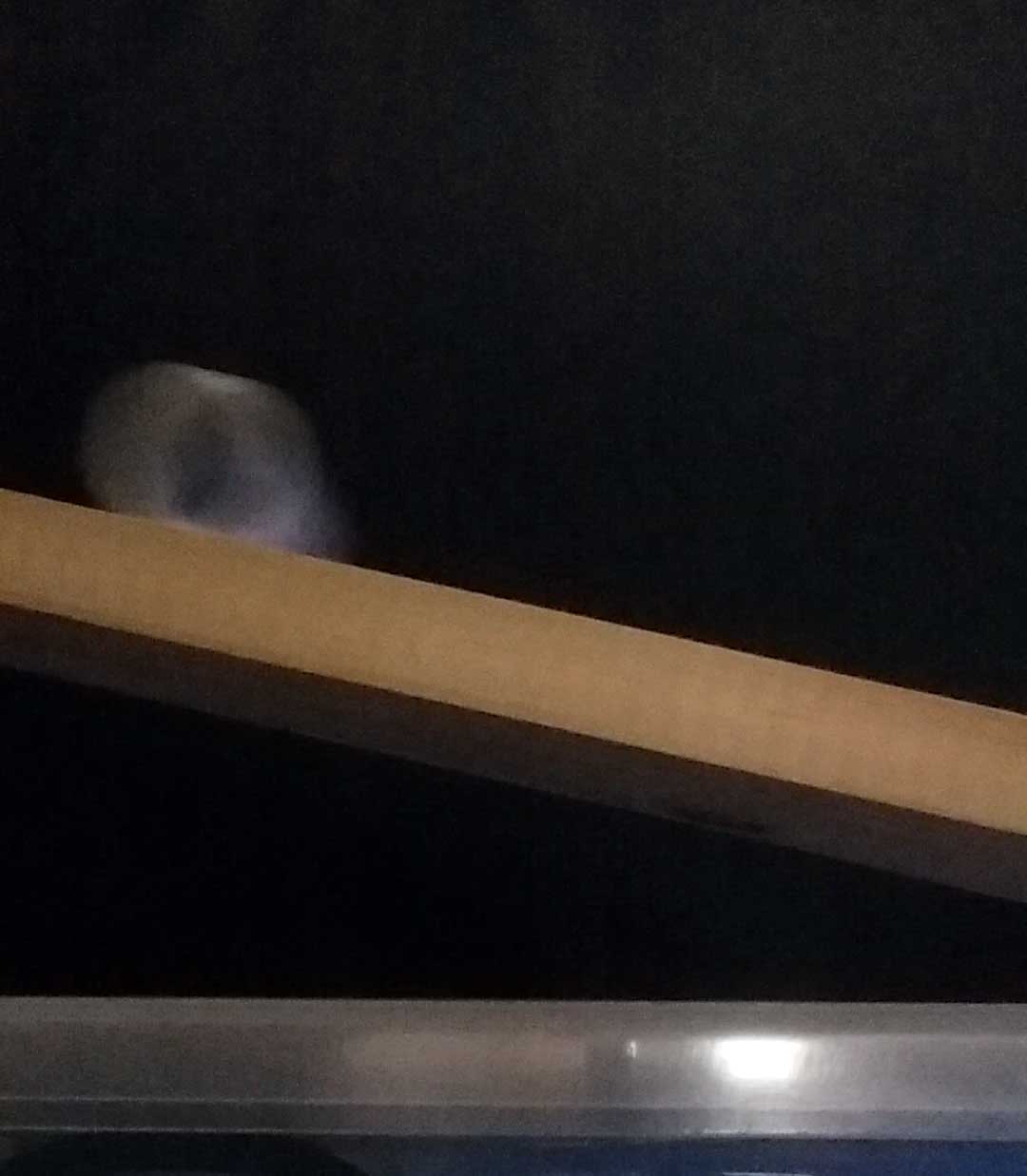Rolling Race Lab
See the Lab Manual p. 107-108. However, instructions here supersede those in the manual.
Items from Lab Kit Needed:
Wooden Board
Aluminum Track
Steel Ball Bearing (Sphere)
Piece of PVC Tube (Hollow Cylinder)
Piecd of Wooden Dowel (Solid Cylinder)
Ruler

Modifications to Lab Manual Instructions
We are using a few small, differently shaped objects rather than large bowling balls etc. Notice that the radii of these objects are approximately the same.
You will not be giving a presentation, so treat the slide recommendations as conclusion questions.
Carry out all of the instructions from the lab manual, changes are listed below.
Instruction 1.
The masses from my kit are: hollow cylinder (11.4 g), solid sphere (66.7 g), solid cylinder (10.8 g). If you have them available, you should use the values from your kit because they will more closely match the motion you record.
Instruction 3.
You may find it difficult to do 3b. until later this week, but ask me about it now if you like.
Instruction 4.
To keep the ball bearing rolling straight, you will probably have to use the aluminum track. Make sure to place this track on the wooden board to keep it stable and avoid bending/damaging it..
The hollow cylinder may be especially difficult to track in your video (see below), think about what point would be best to select or if you can use a different camera angle.

Instruction 6.
The board does not have enough room to carry out a head-to-head race, so we will have to settle for records.
To simulate a race, make a video for each object starting from the same height on a ramps with the same incline angle and compare the time taken to reach the bottom.
p.108
You will have to use the File>Export>Data File... feature of tracker to extract the v vs. t data and get a trendline in Excel or Google Sheets.
You do not need to make any animations or animated slides.
Online Version of Motion Tracking software